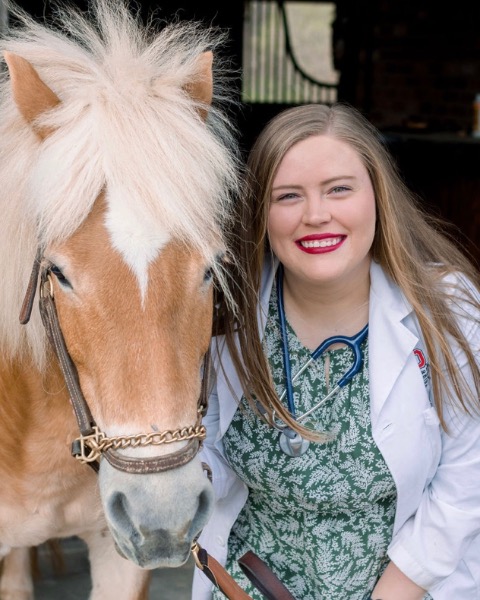Equine
Category: Research Abstract - ePoster
Detection of Anaplasma phagocytophilum in healthy and febrile horses in Central Ohio
(E59) Detection of Anaplasma phagocytophilum in Healthy and Febrile Horses in Central Ohio
Friday, June 16, 2023
12:50 PM - 1:05 PM ET
Location: Solutions Center Poster Park - Kiosk 5

Kaitlyn McEnaney, DVM (she/her/hers)
Rotating Equine Intern
The Ohio State University
Columbus, Ohio, United States
Research Abstract – ePoster Presenter(s)
Abstract:
Background: Equine Anaplasmosis is a zoonotic, tick-borne disease caused by Anaplasma phagocytophilum (AP). In the United States, AP is common in the northeast and upper midwest, although the prevalence in central Ohio is unknown.
Hypothesis/
Objectives: To determine the seroprevalence of AP in healthy and febrile horses in central Ohio.
Animals: Thirty-three febrile and 259 healthy horses were included in this study. Febrile horses with concurrent respiratory disease were excluded.
Methods: A prospective surveillance study evaluated the seroprevalence of AP in apparently healthy and febrile horses in Ohio. Seropositivity was determined using the IDEXX SNAP 4Dx (SNAP) and confirmed with immunofluorescent antibody (IFA). A polymerase chain reaction (PCR) was used to detect AP in all seropositive and febrile horses.
Results: Thirty-one of 259 healthy horses were antibody-positive for AP on SNAP (31/259, 11.9%), and 5 of these were PCR-positive for AP (5/31, 16.1%). Nine of 33 febrile horses were PCR-positive for AP (9/33, 27%). Of the 33 febrile horses, 6 were SNAP-positive (6/33, 18%), and 1 of these was PCR-positive (1/6, 16%). IFA detected antibodies in 76% and 78% of SNAP-positive healthy and febrile horses, respectively.
Conclusions and clinical importance: The seroprevalence of AP in healthy horses was 11.9%, suggesting that Anaplasmosis has a low seroprevalence in central Ohio. Among febrile horses, 27% were PCR-positive for AP. However, there was poor agreement between the SNAP and PCR for AP, limiting its utility in diagnosing clinical disease. Additionally, clinicians should cautiously interpret the SNAP in healthy horses, as false positives are common.
Background: Equine Anaplasmosis is a zoonotic, tick-borne disease caused by Anaplasma phagocytophilum (AP). In the United States, AP is common in the northeast and upper midwest, although the prevalence in central Ohio is unknown.
Hypothesis/
Objectives: To determine the seroprevalence of AP in healthy and febrile horses in central Ohio.
Animals: Thirty-three febrile and 259 healthy horses were included in this study. Febrile horses with concurrent respiratory disease were excluded.
Methods: A prospective surveillance study evaluated the seroprevalence of AP in apparently healthy and febrile horses in Ohio. Seropositivity was determined using the IDEXX SNAP 4Dx (SNAP) and confirmed with immunofluorescent antibody (IFA). A polymerase chain reaction (PCR) was used to detect AP in all seropositive and febrile horses.
Results: Thirty-one of 259 healthy horses were antibody-positive for AP on SNAP (31/259, 11.9%), and 5 of these were PCR-positive for AP (5/31, 16.1%). Nine of 33 febrile horses were PCR-positive for AP (9/33, 27%). Of the 33 febrile horses, 6 were SNAP-positive (6/33, 18%), and 1 of these was PCR-positive (1/6, 16%). IFA detected antibodies in 76% and 78% of SNAP-positive healthy and febrile horses, respectively.
Conclusions and clinical importance: The seroprevalence of AP in healthy horses was 11.9%, suggesting that Anaplasmosis has a low seroprevalence in central Ohio. Among febrile horses, 27% were PCR-positive for AP. However, there was poor agreement between the SNAP and PCR for AP, limiting its utility in diagnosing clinical disease. Additionally, clinicians should cautiously interpret the SNAP in healthy horses, as false positives are common.


